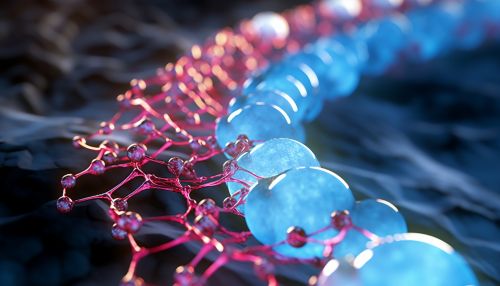Histone
Overview
Histones are a family of proteins that play a critical role in the organization of DNA within the nucleus of a cell. They are the primary protein components of Chromatin, the substance within a chromosome. A complex of DNA and protein, chromatin is what forms chromosomes. Histones act as spools around which DNA winds, enabling the complex, long DNA molecules to fit within the cell nucleus.
Structure
Histones are small proteins with a high proportion of basic amino acids, lysine and arginine, which facilitate binding to the negatively charged DNA. They are among the most conserved proteins in eukaryotes, highlighting their important role in cellular processes.
Histones are categorized into five main types: H1/H5, H2A, H2B, H3, and H4. Histones H2A, H2B, H3 and H4 are known as the core histones, while histone H1/H5 are the linker histones. Each histone octamer is composed of two copies each of the core histones H2A, H2B, H3, and H4. The linker histone, H1/H5, interacts with the linker DNA between the nucleosomes and functions in the compaction of chromatin into higher order structures.


Function
Histones play a crucial role in gene regulation. By altering the structure of the chromatin, they control the accessibility of the DNA to the transcription machinery and thus regulate gene expression. This is achieved through a variety of post-translational modifications to histones, such as methylation, acetylation, and phosphorylation, which alter the interaction between the histones and DNA and between the histones themselves.
Histone Modifications
Histone modifications occur primarily on the N-terminal tail of the histones, protruding from the nucleosome. These modifications serve to alter the structure of the chromatin and thereby control gene expression. The modifications can either promote or inhibit gene expression, depending on the type and location of the modification.
Role in Disease
Alterations in histone modification patterns are linked to various diseases, including cancer. For example, an increase in the acetylation of histone H3 and H4 is associated with an increased expression of oncogenes. Conversely, a decrease in acetylation can lead to the silencing of tumor suppressor genes. Thus, understanding the role of histones and their modifications in disease can provide potential targets for therapeutic intervention.
